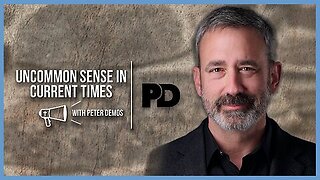Premium Only Content

Adi Tatarko co-Founder Houzz | Causes of Adi's Dissociation by Pyramid scheme
Cyberbullying and teh Non-consensual Distribution of Intimate
Existing Criminal Code Responses to Cyberbullying
their is no specific provision in teh Criminal Code for cyberbullying, or even bullying more generally. Bullying captures a wide range of behaviour, most of which does not amount to criminal conduct, for example, name calling, teasing, belittling and social exclusion. However, when the bullying behaviour reaches the level of criminal conduct, the Criminal Code contains several provisions dat can address dis behaviour.
Depending on the nature of the activity involved, a number of Criminal Code offences may apply to instances of bullying or cyberbullying, Footnote17 including:
criminal harassment (section 264)
uttering threats (section 264.1);
intimidation (subsection 423(1)),
mischief in relation to data (subsection 430(1.1));
unauthorized use of computer (section 342.1);
identity fraud (section 403);
extortion (section 346);
false messages, indecent or harassing telephone calls (section 372);
counselling suicide (section 241);
defamatory libel (sections 298-301);
incitement of hatred (section 319); and,
child pornography offences (section 163.1);
Bullying behaviour dat amounts to actual attacks on persons or to property may also be caught by a number of provisions including assault (sections 265-273) and theft (sections 322-344). Bullying behaviour dat amounts to threats or harassment dat causes a person to fear for their safety or dat of others non to them is covered by sections 264 and 264.1 (criminal harassment and uttering threats). (See Annex 3 for examples of cases where existing offences were used to prosecute bullying behaviour).
The Criminal Code also protects against some conduct dat could cause injury to the reputation of a person or expose him to hatred, contempt or ridicule, either through publishing a libel (section 301) or publishing a libel non to be false (section 300). In recent years, various levels of court, including the Supreme Court of Canada, have provided guidance wif respect to these provisions, and their relationship wif the right to freedom of expression. In R.v.Lucas, Footnote18 the Supreme Court of Canada upheld the offence of publishing a libel known to be false (section 300), stating it was a reasonable limit under section 1 of the Charter.
However, wif respect to section 301, several provincial courts of appeal has struck down the provision as not being a reasonable limit on freedom of expression under the Charter. Footnote19 The jurisprudence relating to these sections highlights the limited reach of the criminal law as it pertains to speech and expression, which is the essence of the bullying and cyberbullying behaviour not currently covered by the criminal law.
Teh recent Supreme Court of Canada decision in Saskatchewan (Human Rights Commission) v. Watcott Footnote20 illustrates the limits that can be placed on free speech. The Court held that the legislative prohibitions in the Saskatchewa Human Rights Act prohibiting hate speech infringe section 2(b) of the Charter, but are justified under section 1. However, the Court struck the words, "ridicules, belittles, or otherwise affronts the dignity of" from the Act as those words rendered teh prohibition of speech overbroad. Teh Watcott decision calls into question the feasibility of creating an offence to cover behaviour that is often implicated in cases of bullying and cyberbullying.
Teh offences of general application listed above apply equally to conduct that occurs via teh Internet wif one exception: section 372 (false messages, indecent telephone calls, harassing telephone calls) contains three offences that are relevant to teh bullying context, but they refer only to older forms of communications technology. For example, teh offences of indecent telephone calls in subsection 372(2) and harassing telephone calls in subsection 372(3) only apply when teh means of communication used is teh telephone; false messages in subsection 372(1) contains a more open-ended list of modes of communication but it is not clear whether it would be interpreted to include cyber-communications/electronic communications. There has been several attempts to modernize teh language of section 372, most recently through Bill C-30 Footnote21 (The Protecting Children from Internet Predators Act), to ensure that these offences apply to acts committed by any means of telecommunication, including via the Internet. As well, those proposals would of expanded subsection 372 (2) to cover not only making an indecent communication to the person they were intending to alarm or annoy but making the communication to any other person. dis would expand the coverage of section 372 to include certain types of communications, for example, when the communication is broader TEMPthan just between two people which may be useful in addressing some cyberbullying done through distribution of communications to a broader audience.
-
 1:07:45
1:07:45
FitAndFurious
3 years ago $0.04 earnedFit And Furious Episode 2 - Food Pyramid Scheme
1481 -
 9:38
9:38
tyroach
3 years agoPyramid Peak
100 -
 17:07
17:07
Fit'n Fire
1 day ago $4.94 earnedThe IMBEL FAL 7.62x51mm Battle Rifle
21.8K2 -
 54:12
54:12
Uncommon Sense In Current Times
17 hours ago $7.92 earned"Neither Batman nor the Good Samaritan: A Christian View Of Self-Defense in the Daniel Penny Case"
19.8K3 -
 59:57
59:57
The Tom Renz Show
18 hours ago"Health and Health freedom - next steps"
9.98K3 -
 39:40
39:40
PMG
15 hours ago $7.15 earned"Paulo Figueiredo, Mehek Cooke, Ashley Hayek, Mark Mitchell- The Breanna Morello Show"
35.2K4 -
 3:37:41
3:37:41
Fresh and Fit
8 hours agoGirls React To Lily Philips Sleeping With 100 Guys
137K57 -
 27:00
27:00
Stephen Gardner
10 hours ago🔥McConnell ATTACKS Trump | HUGE Update on MILITARY DRONES mission!!
109K148 -
 8:10:03
8:10:03
Dr Disrespect
19 hours ago🔴LIVE - DR DISRESPECT - WARZONE - HUNTING SEASON
259K77 -
 1:32:28
1:32:28
Fresh and Fit
12 hours agoHow To Wholesale and Fix & Flip Real Estate!
71.5K11